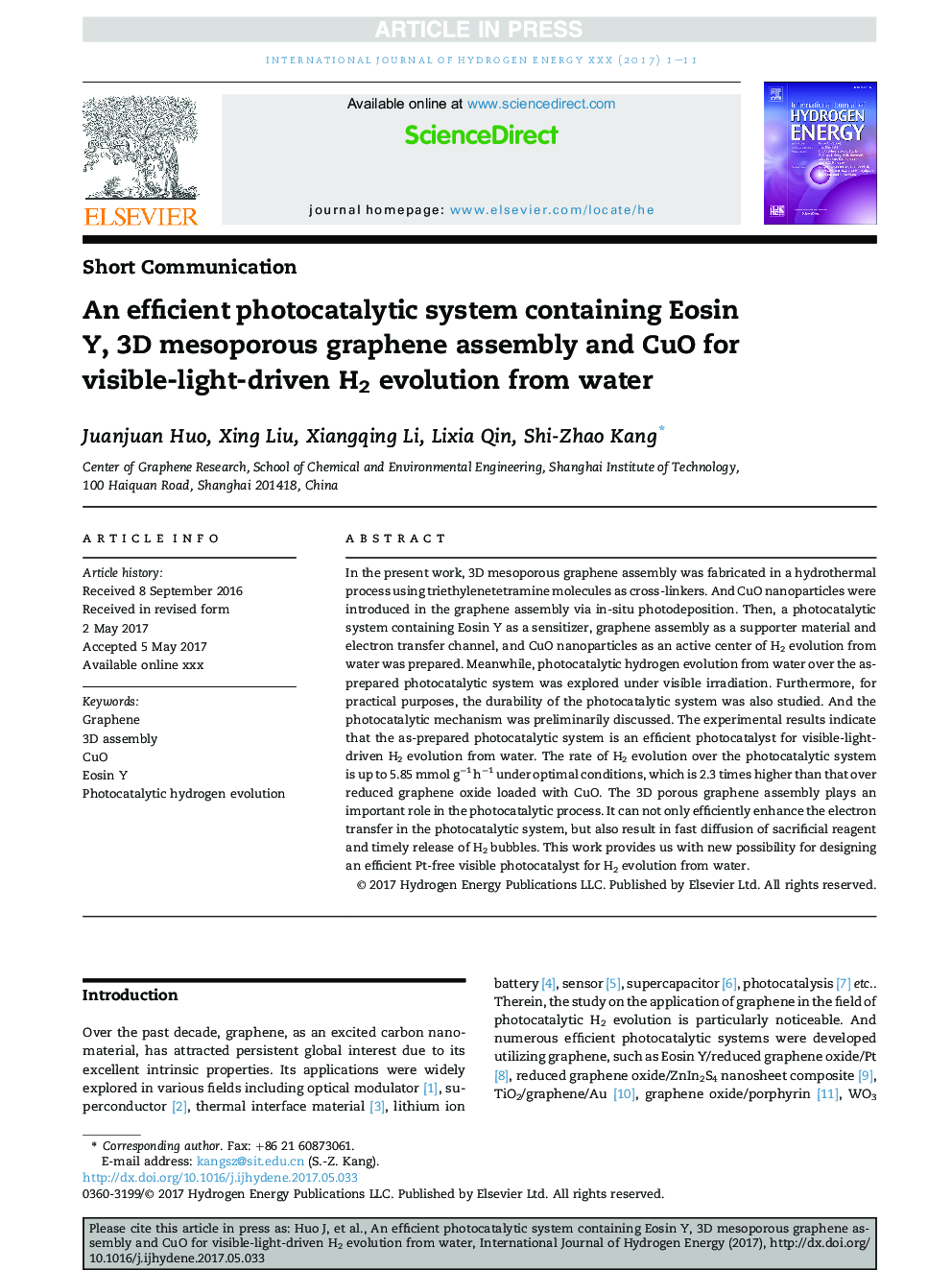| Article ID | Journal | Published Year | Pages | File Type |
|---|---|---|---|---|
| 5146580 | International Journal of Hydrogen Energy | 2017 | 11 Pages |
Abstract
In the present work, 3D mesoporous graphene assembly was fabricated in a hydrothermal process using triethylenetetramine molecules as cross-linkers. And CuO nanoparticles were introduced in the graphene assembly via in-situ photodeposition. Then, a photocatalytic system containing Eosin Y as a sensitizer, graphene assembly as a supporter material and electron transfer channel, and CuO nanoparticles as an active center of H2 evolution from water was prepared. Meanwhile, photocatalytic hydrogen evolution from water over the as-prepared photocatalytic system was explored under visible irradiation. Furthermore, for practical purposes, the durability of the photocatalytic system was also studied. And the photocatalytic mechanism was preliminarily discussed. The experimental results indicate that the as-prepared photocatalytic system is an efficient photocatalyst for visible-light-driven H2 evolution from water. The rate of H2 evolution over the photocatalytic system is up to 5.85 mmol gâ1 hâ1 under optimal conditions, which is 2.3 times higher than that over reduced graphene oxide loaded with CuO. The 3D porous graphene assembly plays an important role in the photocatalytic process. It can not only efficiently enhance the electron transfer in the photocatalytic system, but also result in fast diffusion of sacrificial reagent and timely release of H2 bubbles. This work provides us with new possibility for designing an efficient Pt-free visible photocatalyst for H2 evolution from water.
Related Topics
Physical Sciences and Engineering
Chemistry
Electrochemistry
Authors
Juanjuan Huo, Xing Liu, Xiangqing Li, Lixia Qin, Shi-Zhao Kang,
